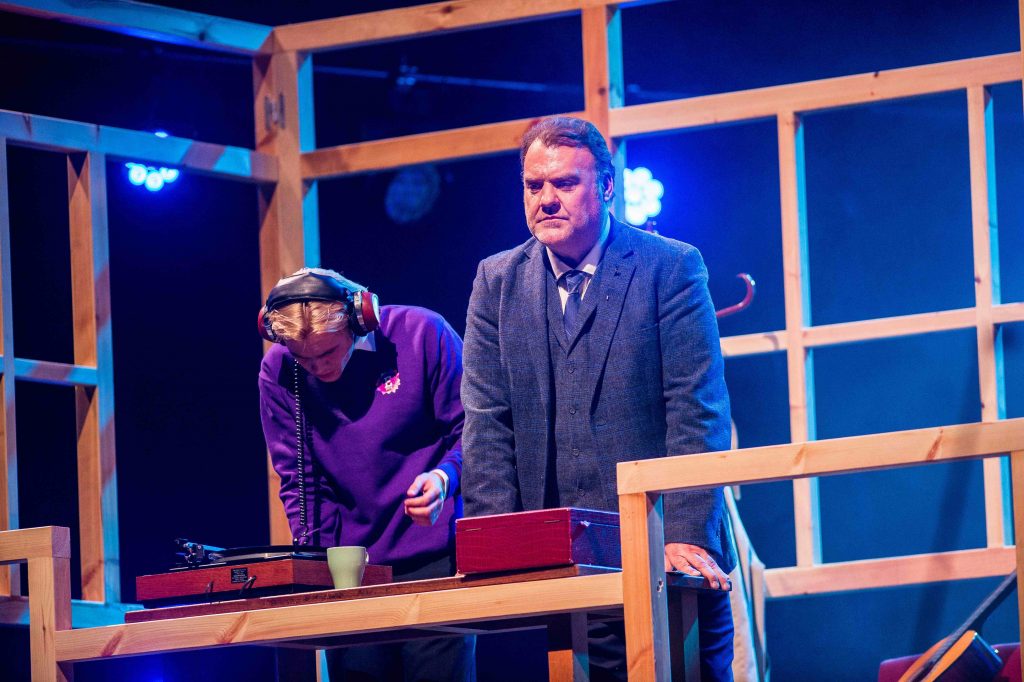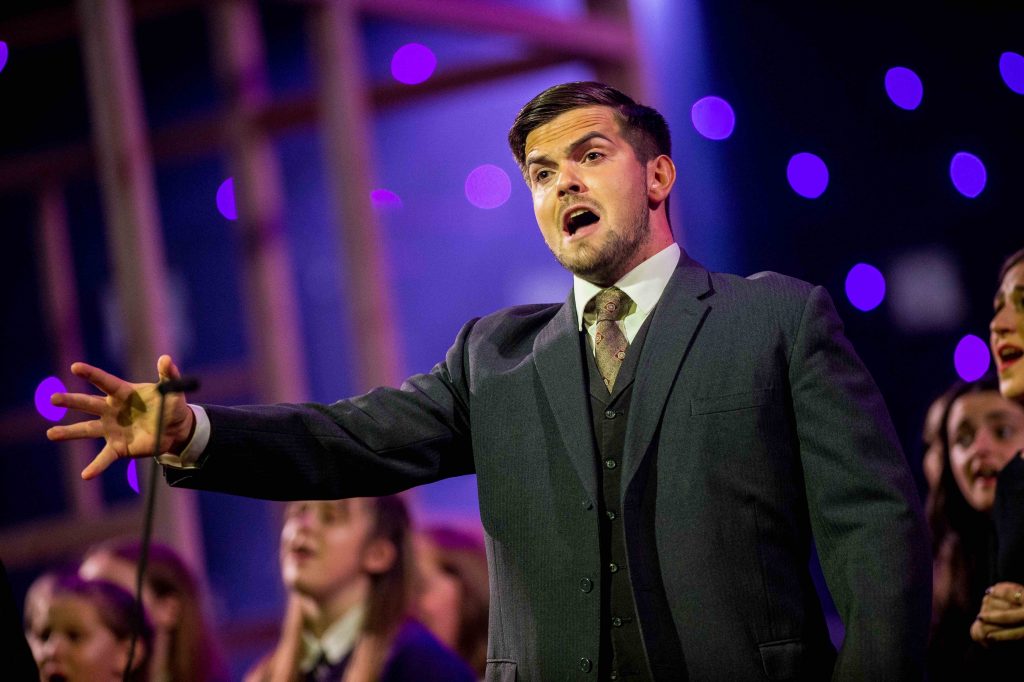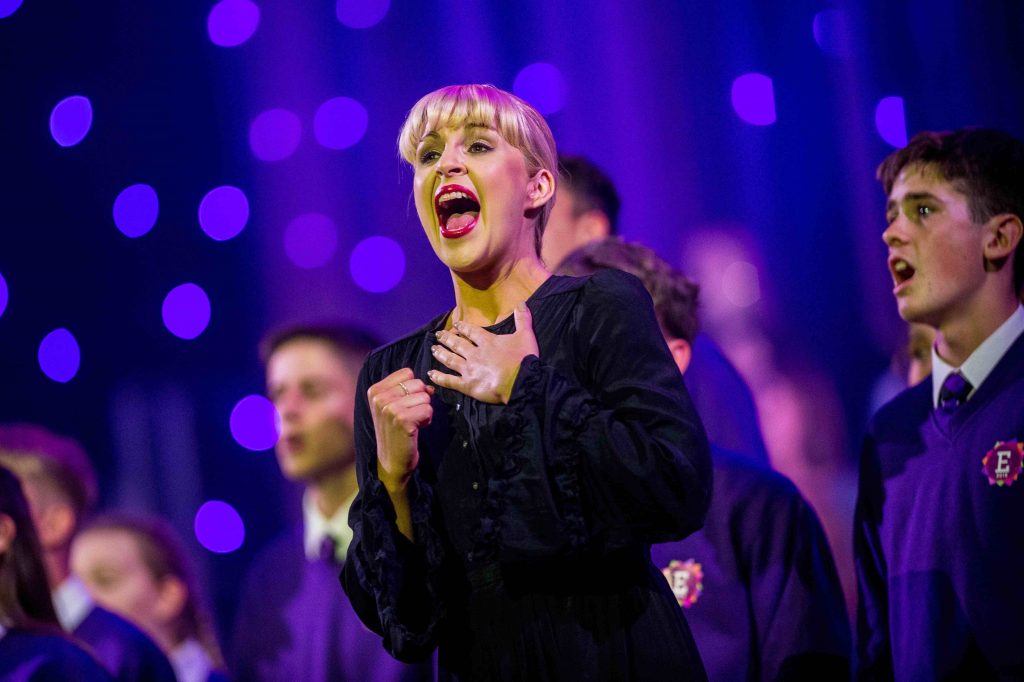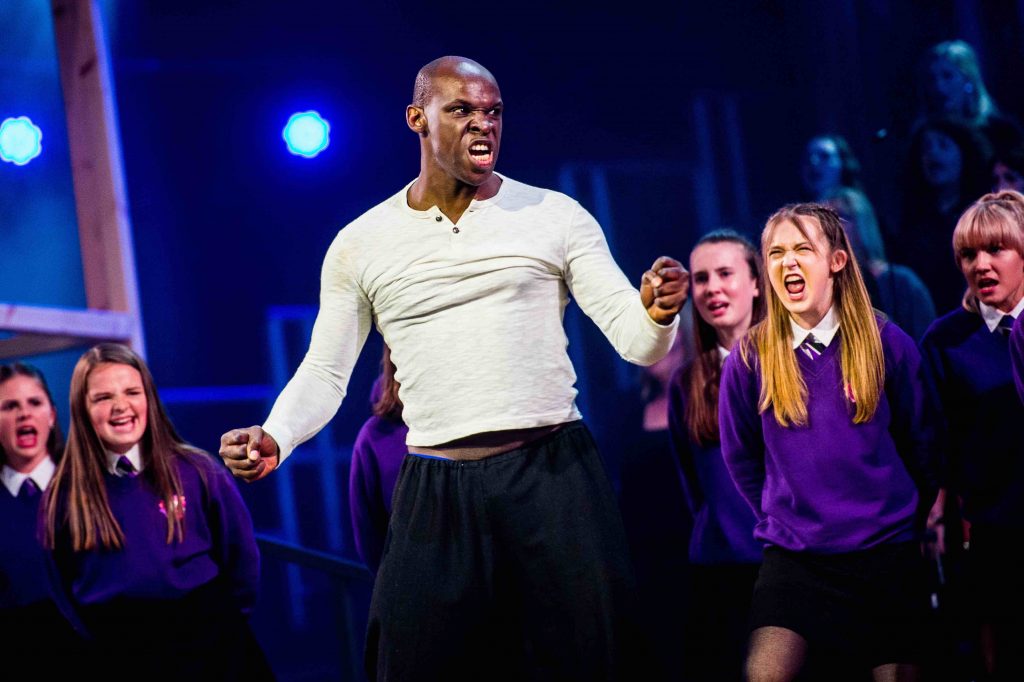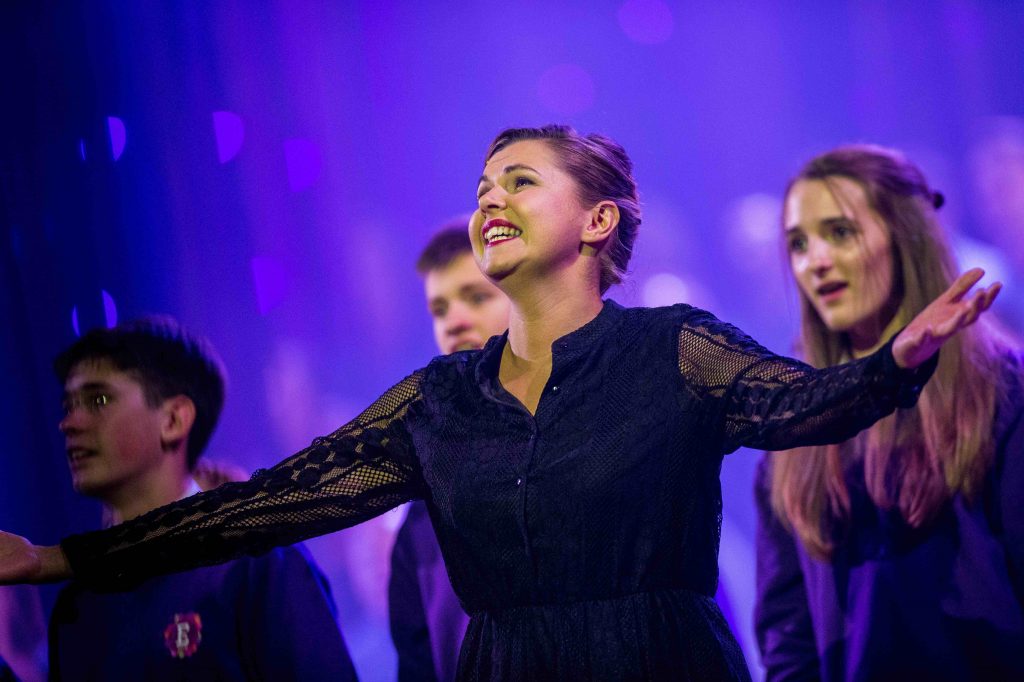Mermaid Quay is no stranger to hecticness on a Saturday night in summer, but this evening was unique: notable for the presence of hundreds of Welsh-speakers, celebrating the first National Eisteddfod to be held in Cardiff for a decade (and possibly the most openly accessible ever, with free entrance to many of its attractions); and also for the proximity of one of Wales’ greatest cultural exports.
Hwn yw fy Mrawd is Sir Bryn Terfel’s tribute to another legendary singer – African-American Paul Robeson who became a major star from the 1920s onwards, but whose career was stymied by racism and political persecution. His links with Wales have been celebrated by other notable artists (such as the Manic Street Preachers and playwright Greg Cullen), but this piece is, by some distance, the most ambitious attempt to pay tribute to his legacy.
As the show begins, the stage of the Donald Gordon Auditorium is even more densely populated than is usual, with the small ensemble of musicians to the right, a huge choir at the back, and what appears to be a raised conservatory on the left – actually the office of Mr Jones, the headmaster in a Welsh-medium secondary school.
The pupils are being given an assignment – to write about a Welsh hero. One of the schoolboys, Twm – Steffan Cennydd – seems isolated and disinterested. Terfel’s Mr Jones, a family friend, engages him in conversation about one of his own heroes: Paul Robeson.
He takes us on a journey through Robeson’s eventful life – from his childhood as the son of a preacher who was born in slavery, via becoming one of his nation’s best college footballers, having his hopes of becoming a lawyer dashed by the intolerance of his would-be workmates, and using his remarkable bass-baritone voice and impressive physique to become a star of stage and screen, appearing in the 1936 Hollywood version ofShow Boat(singing “Ol’ Man River”), and starring in Othello on Broadway and in London.
It was while he was residing in Britain that he made the film The Proud Valley, in 1940, starring as an American miner seeking work in South Wales, but he had already been supportive of Welsh colliers, financially and otherwise for a number of years – a relationship which continued over the decades. Having had his passport confiscated as a result of his run-in with the House Un-American Activities Committee (unlike many whose careers were ruined, he was, for much of his life, an actual communist), Robeson addressed the Miners Eisteddfod in Porthcawl in 1957 via trans-Atlantic phone-call; when it was returned, he attended the National Eisteddfod in Ebbw Vale in 1958 – exactly 60 years prior to the premiere of Hwn yw fy Mrawd (“This is my Brother”).
Robat Arwyn’s melodic score takes in a number of styles, from Celtic folk to gospel to show-tunes, as the tale unfolds, in revue style – this is certainly more Noson Lawenthan grand opera. He gleefully seizes the opportunity to make use of the immense chorus, which includes multiple Eisteddfod award-winners Côrdydd, Treorchy Male Voice Choir, gospel choir Black Voices (from Birmingham), and local schoolchildren; as well as soloists John Ieuan Jones, Elain Llwyd, Elin Llwyd, Steffan Prys Roberts and Mared Williams.
As a non-Welsh-speaker, I cannot attest to the quality of Mererid Hopwood’s book and lyrics, although from the many appreciative titters, I assume that much of the dialogue hit the spot; and I certainly discerned that it was not entirely uncritical of Robeson – the phrase “dim sant” was evident; and dancer Matthew Gough embodied both his sporting prowess and libidinousness.
Director Betsan Llwyd managed to keep the whole thing under control, making effective use of what were almost too many resources to keep track of.
The star, of course, was Sir Bryn Terfel – a figure almost as imposing and dominant as his hero’s. His voice was as rich and magical as the long-sold-out audience must have expected; although I suspect they may have appreciated a few more solos. In fact, he sang only one song from the Robeson repertoire – a translation of “Deep River”; and even he didn’t seem to quite reach Robeson’s low notes.
Which brings us to the main problem – the unavoidable absence of Paul Robeson. He did appear via video back-projection; and the handful of snatches of his voice played as part of the sound design were spell-binding. But while Sir Bryn and his creative team must be applauded for not simply taking the easy option of putting on a concert of Robeson hits (Willard White having already staked out that territory), there was the inevitable sense of this being a party at which the guest of honour had long since left the building.
Still, the show succeeds admirably in its intentions – to present a crowd-pleasing, Welsh-language, Wales-oriented take on the Robeson story, whilst showcasing a dizzying range of talents.
These are the only two performances of Hwn yw fy Mrawd scheduled thus far. I would not be at all surprised to see it return at some point – perhaps with sur-titles replacing the corporate logo (the show was sponsored by a nuclear power company – ironic on several levels) on the auditorium’s video monitors
The Independent Voice of Artists and Reviewers in Wales / Llais Artistiaid ac Adolygwyr yng Nghymru
